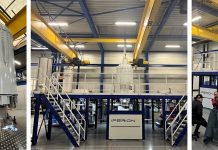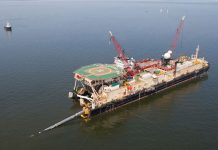Of the 11 printed parts going to Mars, five are in Perseverance’s PIXL instrument. Short for the Planetary Instrument for X-ray Lithochemistry, the lunchbox-size device will help the rover seek out signs of fossilized microbial life by shooting X-ray beams at rock surfaces to analyze them.
To make the instrument as light as possible, the JPL team designed PIXL’s two-piece titanium shell, a mounting frame, and two support struts that secure the shell to the end of the arm to be hollow and extremely thin. In fact, the parts, which were 3D printed by a vendor called Carpenter Additive, have three or four times less mass than if they’d been produced conventionally.
Perseverance’s six other 3D-printed parts can be found in an instrument called the Mars Oxygen In-Situ Resource Utilization Experiment, or MOXIE. This device will test technology that could produce industrial quantities of oxygen to create rocket propellant on Mars, helping astronauts launch back to Earth.
To create oxygen, MOXIE heats Martian air up to nearly 1,500 degrees Fahrenheit (800 degrees Celsius). Within the device are six heat exchangers – palm-size nickel-alloy plates that protect key parts of the instrument from the effects of high temperatures.






